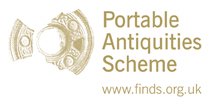Server check!
You are on the training database
History of Markets in England
Principal investigator: Liam
Level: PhD level research
~~Brief Synopsis of D. Lawrenson’s PhD research work and need for access to the PAS data base.
I have been studying part-time for a PhD at the University of East Anglia since January this year. My research topic is the history of markets in England in the long duree, from the early middle-ages to the twenty first century. A particular concern is the process by which markets at particular locations became superseded by the more amorphous, or at least less focussed, patterns of exchange of today. So far my focus has been on Norfolk, although I do intend to cast my net wider. One obvious candidate for the transformation that I am interested in is at the end of the medieval. In Norfolk there are charters and other evidence for over 150 markets being created or existing in the later medieval period, whereas the evidence from the early modern points to the number of functioning markets at between 30 and 40, the exact number is disputed. However, it has been argued that many of the medieval markets never properly functioned even though they may have been chartered. From this perspective, it is argued that the acquisition of a charter and the creation of markets were principally driven by lordly pursuit of status and that the majority of such markets failed. My collection of documentary and landscape evidence from Norfolk has so far indicated that although this may have been the case at certain locations it is certainly far from a universal truth. As you are no doubt aware the work of Lewis and Oksanen casts doubt on the view that the acquisition of a charter was predominantly an act of economic folly and that instead market charters and PAS medieval finds are correlated. I would like to have access to the PAS data base in order to investigate more fully the relationship between sites identified as having markets, whether by charter or prescription, and medieval finds recorded by PAS. Such further investigation would involve examining the extent to which PAS data is correlated with well and less well documented sites and other possible markers of a past market history, eg: medieval crosses, open spaces in village centres, possible burgage plots etc. As a consequence it is hoped to get some idea of the numbers of markets in the late medieval compared to the early modern. In this way it is hoped to pin down the point at which markets began to be transformed from something located in place into what is now called, whether helpfully or not ‘the market’. It is also highly likely that I would have further reason to require access to PAS data later on in my research, as one example from many, to examine the possible origins of markets by looking at the relationship between middle-saxon productive sites and later market histories.
Audit data
- Created: 8 years ago
- Created by: S M


